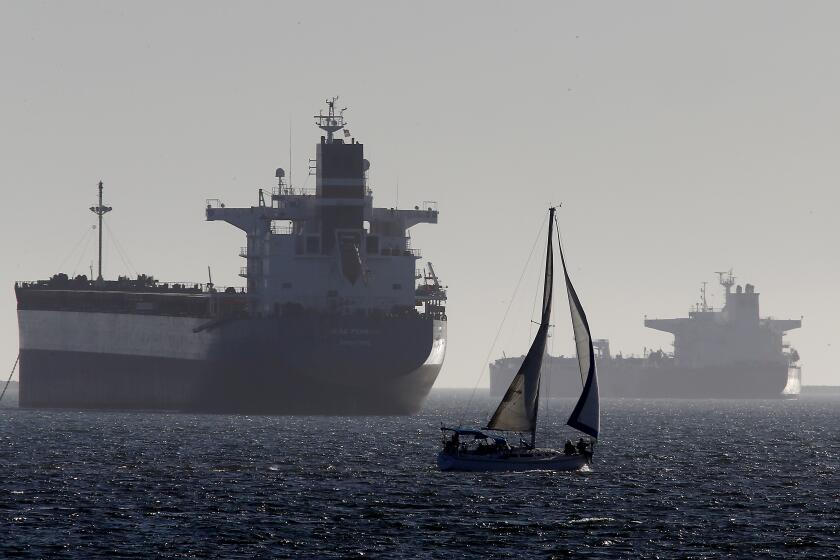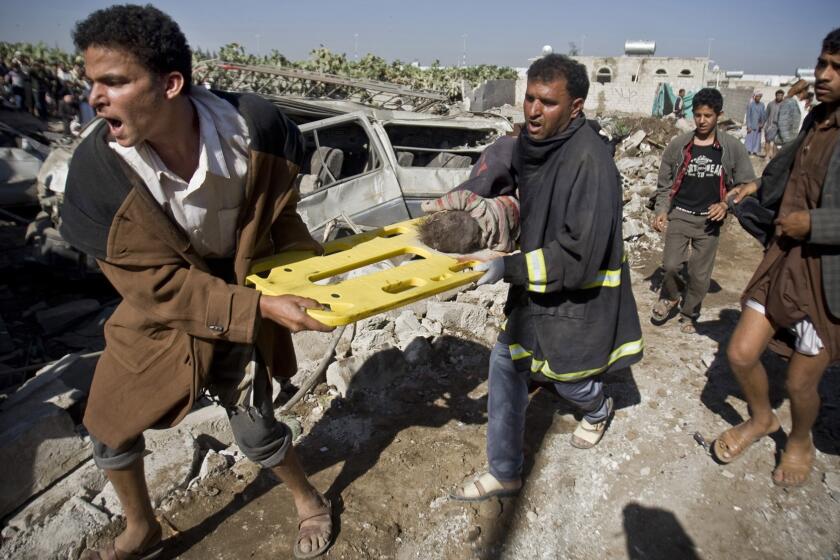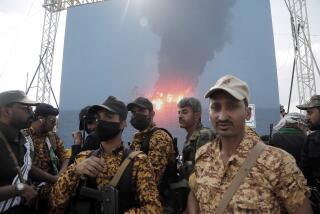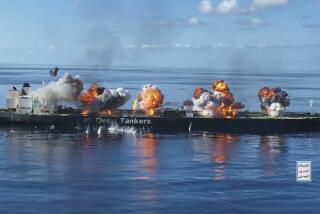Abandoned oil tanker off Yemen in danger of exploding, U.N. warns
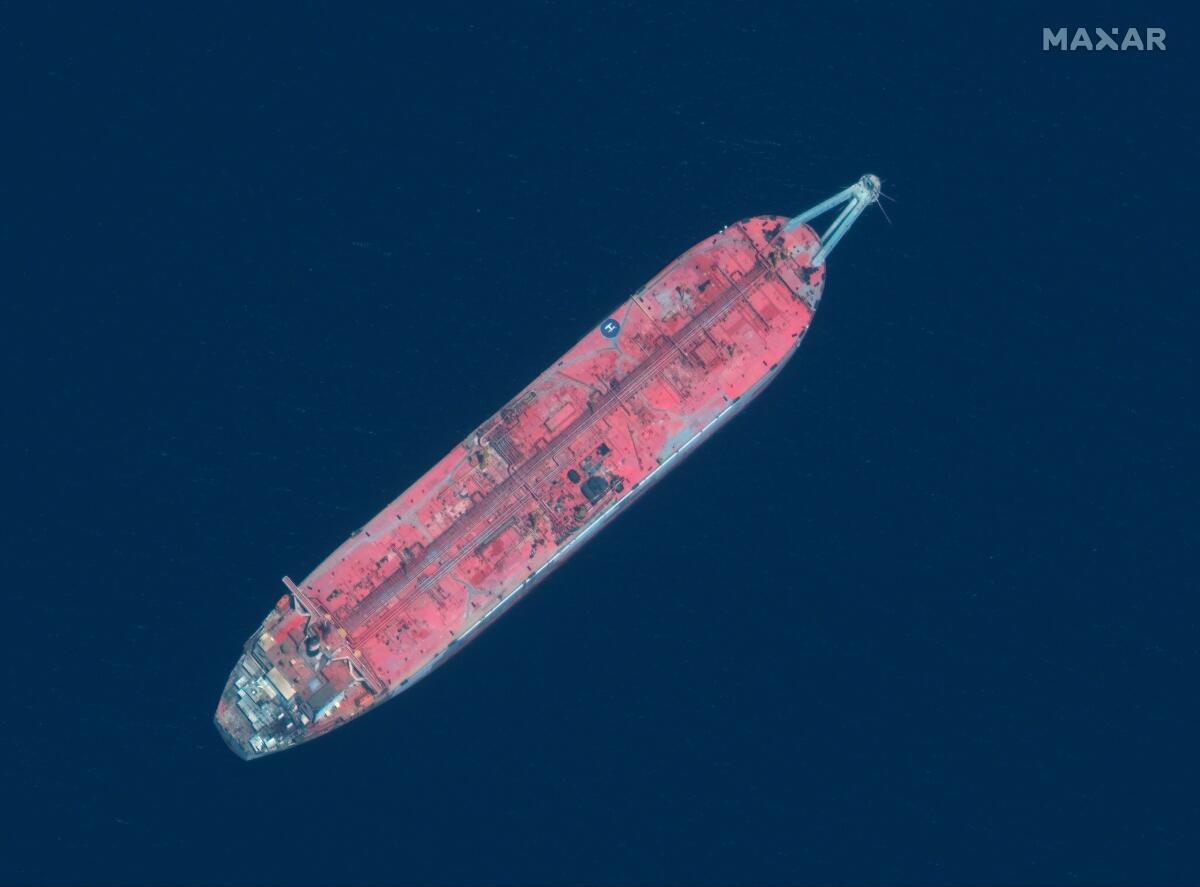
CAIRO — The United Nations said an abandoned oil tanker moored off the coast of Yemen and laden with more than 1 million barrels of crude oil is at risk of rupturing or exploding, which would cause massive environmental damage to Red Sea marine life, desalination factories and international shipping routes.
Houthi rebels who control the area where the ship is moored have denied U.N. inspectors access to the vessel. Internal documents obtained by the Associated Press show that seawater has entered the engine compartment of the tanker, which hasn’t been maintained for more than five years, causing damage to the pipelines and increasing the risk of sinking. Rust has covered parts of the tanker and the inert gas that prevents the tanks from gathering inflammable gases has leaked out. Experts say maintenance is no longer possible because the damage to the ship is irreversible.
For years, the U.N. has been trying to send inspectors to assess the damage aboard the vessel known as the FSO Safer and look for ways to secure the tanker by unloading the oil and pulling the ship to safety.
But one European diplomat, a Yemeni government official and the tanker’s company owner said that Houthi rebels have resisted. The diplomat said the rebels are treating the vessel as a “deterrent like having a nuclear weapon.” All three individuals spoke on condition of anonymity because of the sensitivity of the subject.
“They do say that openly to the U.N., ‘We like to have this as something to hold against the international community if attacked,’” the diplomat said. “Houthis are definitely responsible for failure of the U.N. to look at the ship.”
Money is also an issue, the diplomat said, adding that the Houthis initially were demanding millions of dollars in return for the oil stored in the tanker. The U.N. is trying to reach an arrangement where money could be used to pay workers and employees at Yemen’s Red Sea ports, the diplomat added.
Some experts, however, criticize both the Houthis and the U.N. for failing to fully understand the magnitude of the crisis with the abandoned ship.
Ian Ralby, founder of I.R. Consilium, who specializes in maritime and resource security, told the AP that the U.N.’s efforts to send a team to assess the ship are “futile.” What the vessel needs is a salvage team, he said.
“It’s real shame that they wasted so much money and time in this futile operation,” said Ralby. “If you are taking these years to get a simple team to assess, we will not have a second chance to salvage,” he added.
Ralby, who has written extensively about the tanker, told the AP that amid declining oil prices the cost spent on cleaning up the environmental damage from an explosion or leakage will be much more than the millions worth of oil on the ship.
Stunning video shows dozens of oil tankers off L.A. coast with nowhere to go
But the Houthis have refused to back down from their demands.
Mohammed Ali al-Houthi, the rebel group’s leader, blamed the U.S. and Saudis for not letting the rebels sell the oil, saying in a June 18 Twitter post that any “disastrous consequences ... God forbid,” that could result from the collapse of the vessel will be the responsibility of these two countries.
The Iranian-backed Houthi rebels are in control of the western Red Sea ports, including Ras Issa, about four miles from where the FSO Safer tanker has been moored since the 1980s. They are at war with the internationally recognized government, which is backed by a Saudi-led coalition and the United States. President Abed Rabbu Mansour Hadi is in exile in Saudi Arabia, and his government in disarray.
The floating tanker is a Japanese-made vessel built in the 1970s and sold to the Yemeni government in 1980s to store for export up to 3 million barrels pumped from oil fields in Marib, a province in eastern Yemen. The ship is 118 feet long and has 34 storage tanks.
Saudi Arabia and others fought against Houthi rebels to restore government control in Yemen, but the coalition has splintered and the country is a mess.
A senior official at the state-owned oil company in charge of the tanker said that, because of a shrinking operational budget, which used to be around $20 million a year before the war, the company could no longer afford to purchase fuel needed to run the boilers on the ship. The boilers are needed to power generators that, among other things, keep an inert gas flowing that prevents explosions. The tanker needs 11,000 tons of the fuel, which cost about $8 million each year.
Since 2015, annual maintenance on the ship has come to a complete halt, and most crew members, except for 10 people, were pulled off the vessel after the Saudi-led coalition imposed a land, sea and air embargo before waging an extensive air campaign to dislodge the Houthi rebels from areas they seized, including the capital, Sanaa.
The civil war in Yemen has caused massive destruction in most of the areas under Houthis control. Because of the proximity of the tanker to the contested Hodeida port, fears have grown that a stray shell or bullet could hit the tanker, causing a massive explosion or oil leak into the Red Sea.
More to Read
Sign up for Essential California
The most important California stories and recommendations in your inbox every morning.
You may occasionally receive promotional content from the Los Angeles Times.
